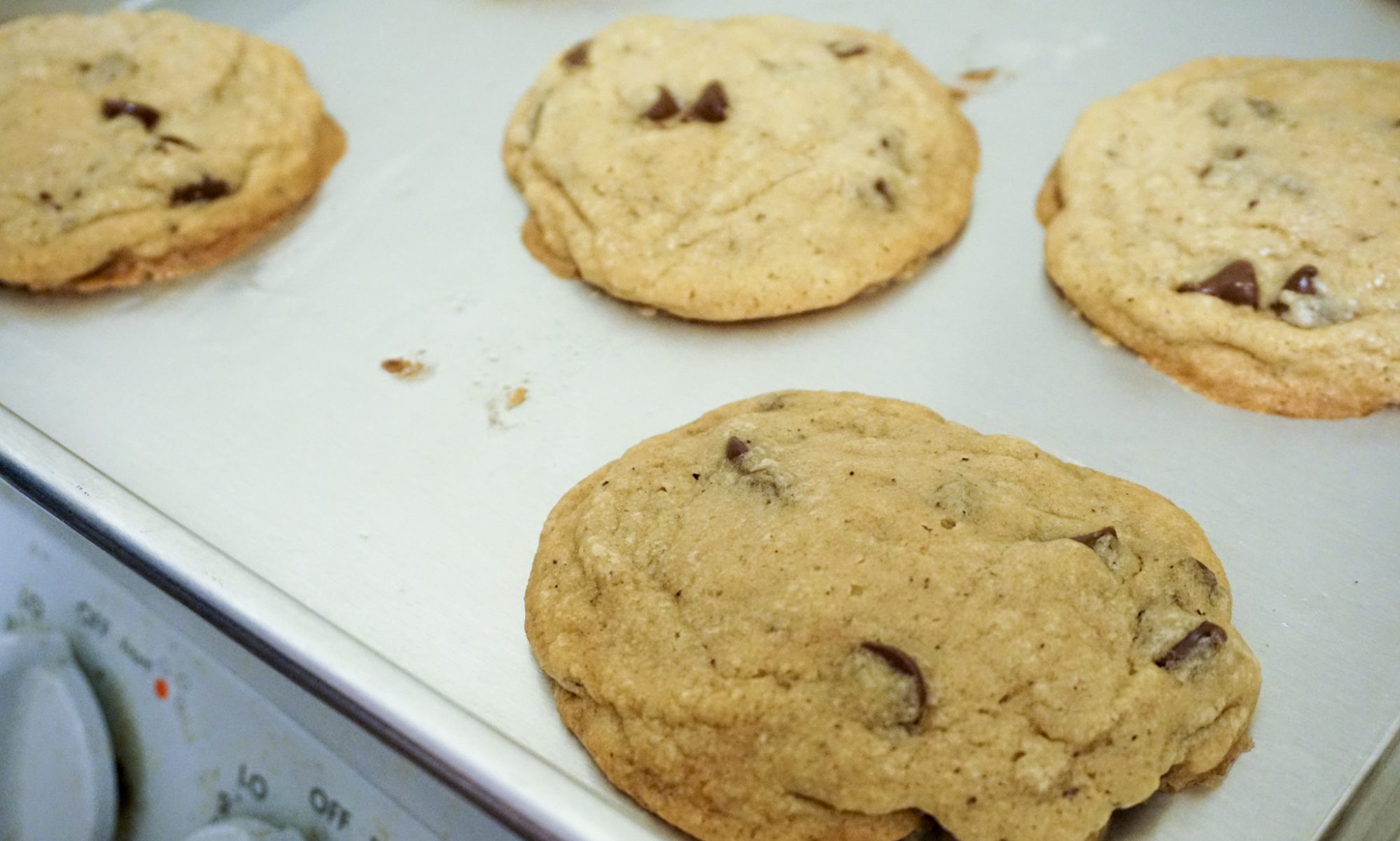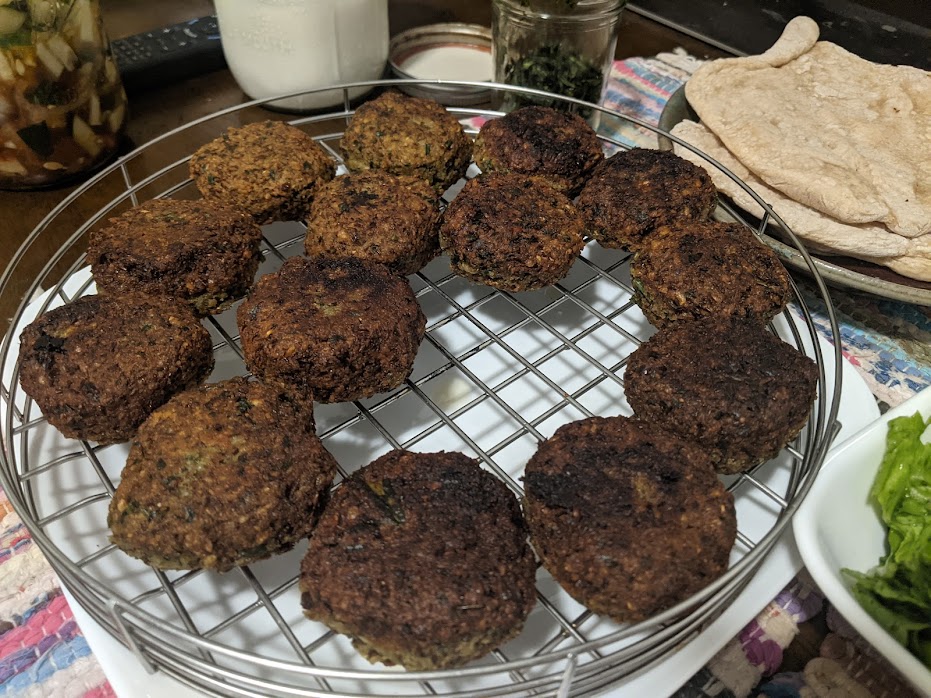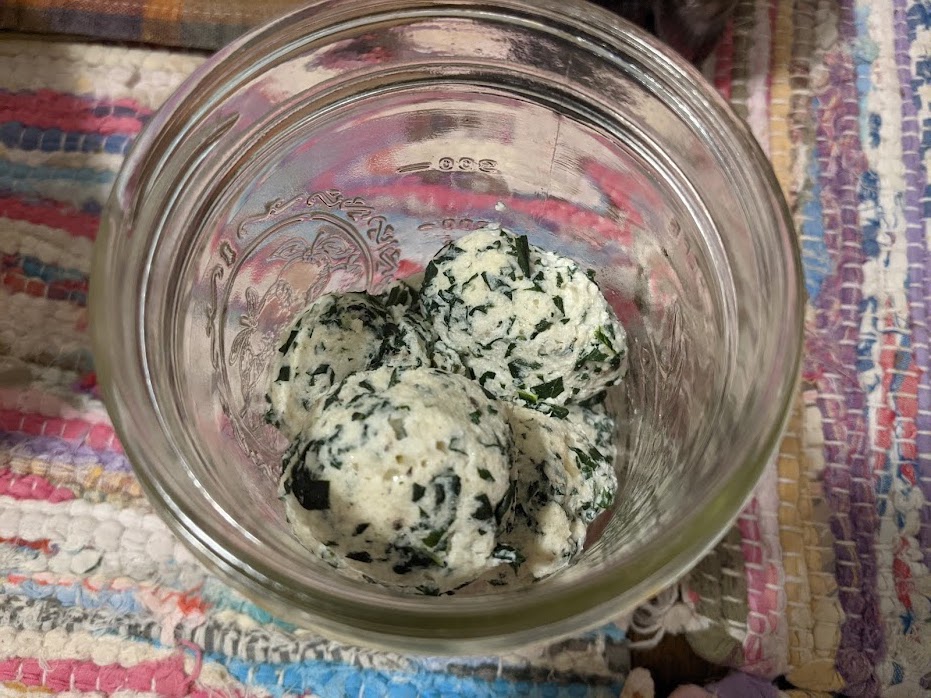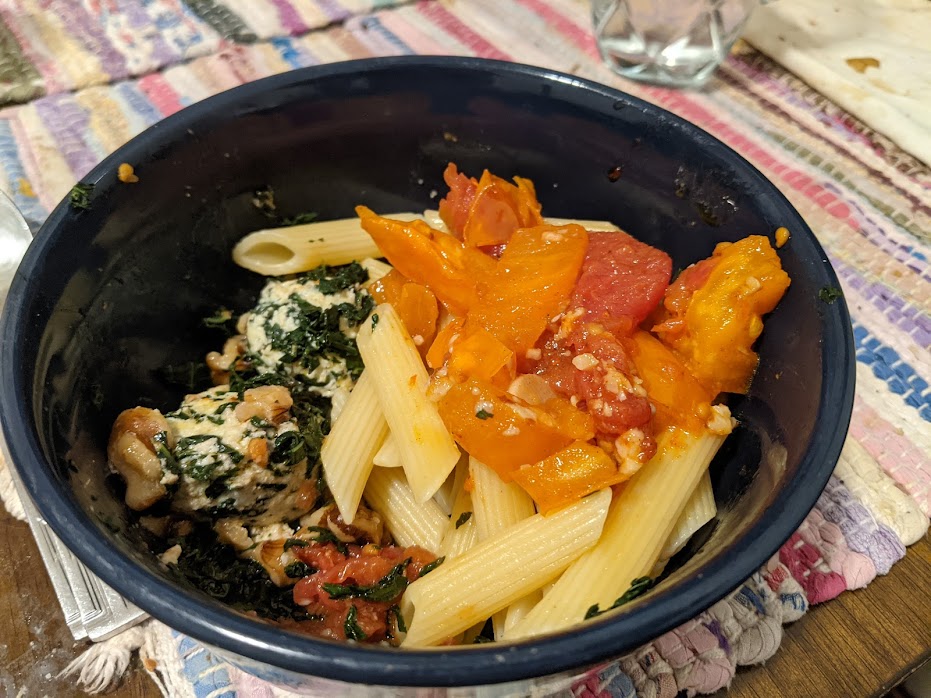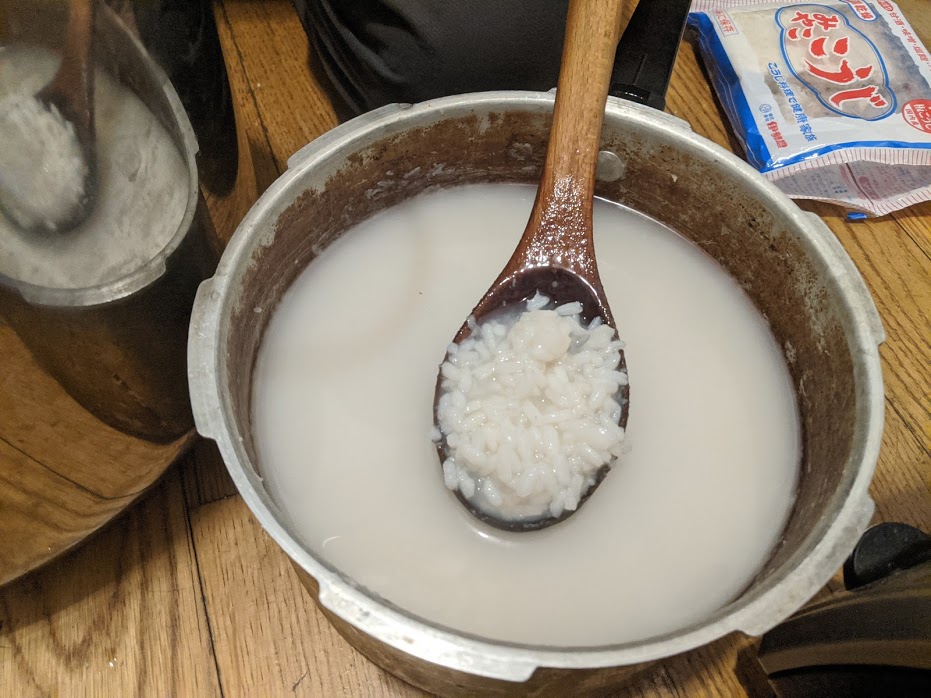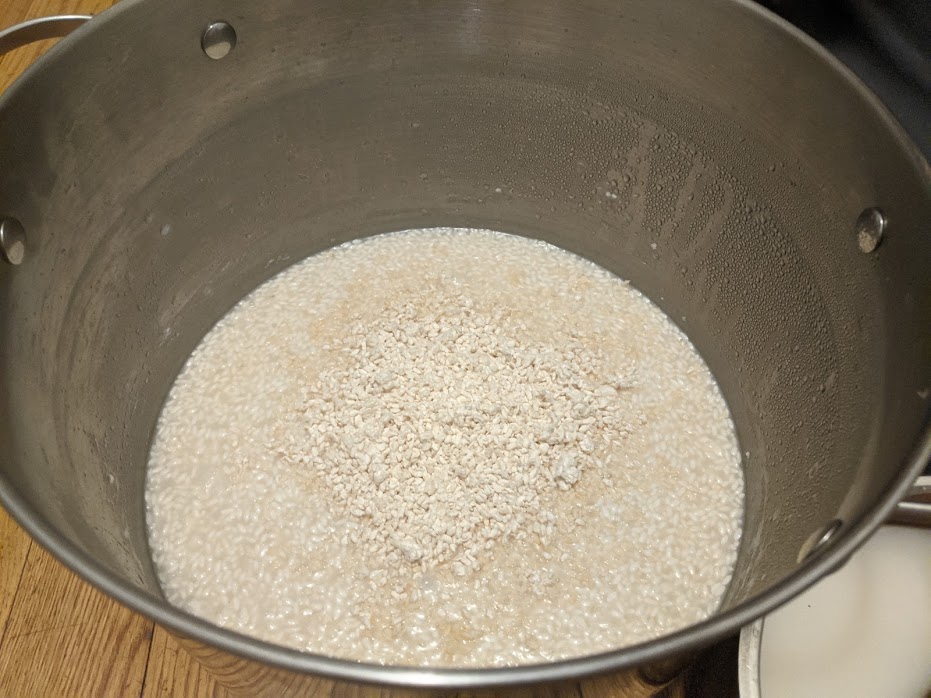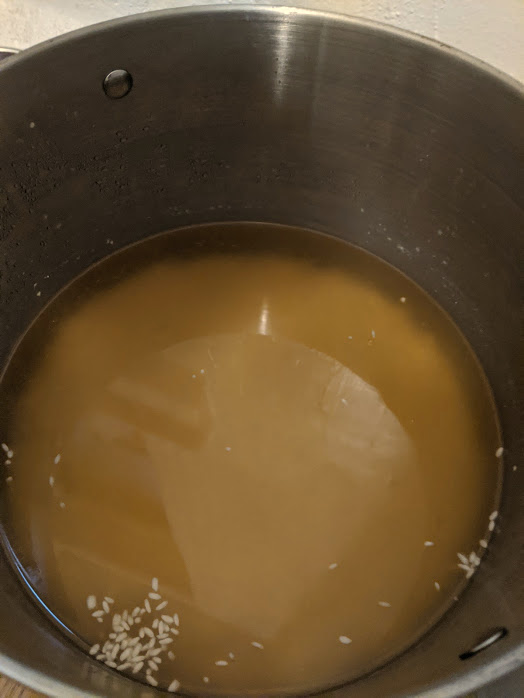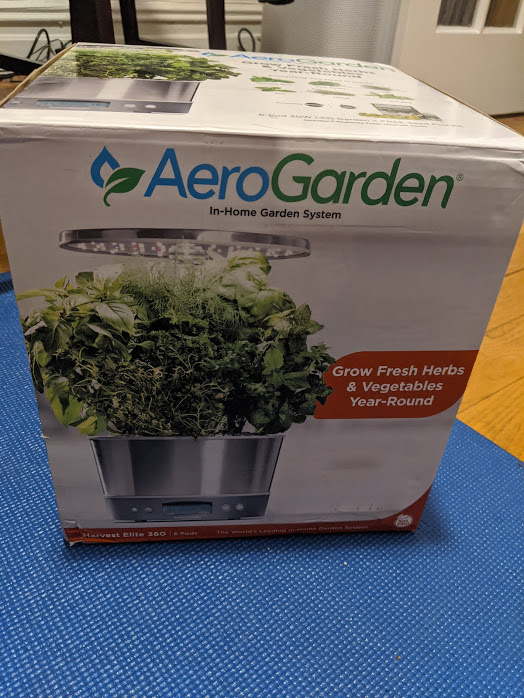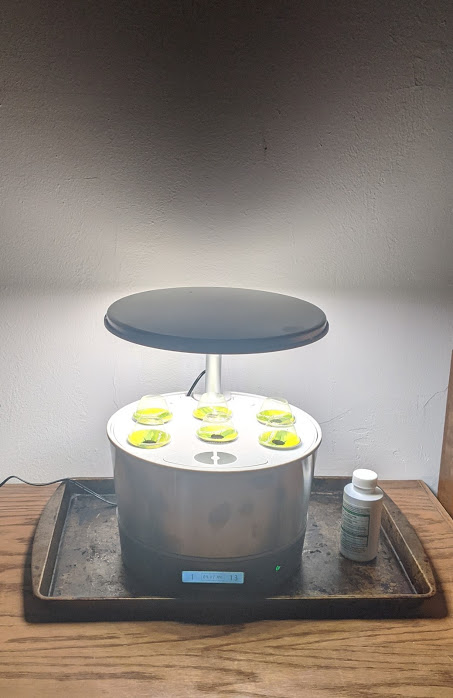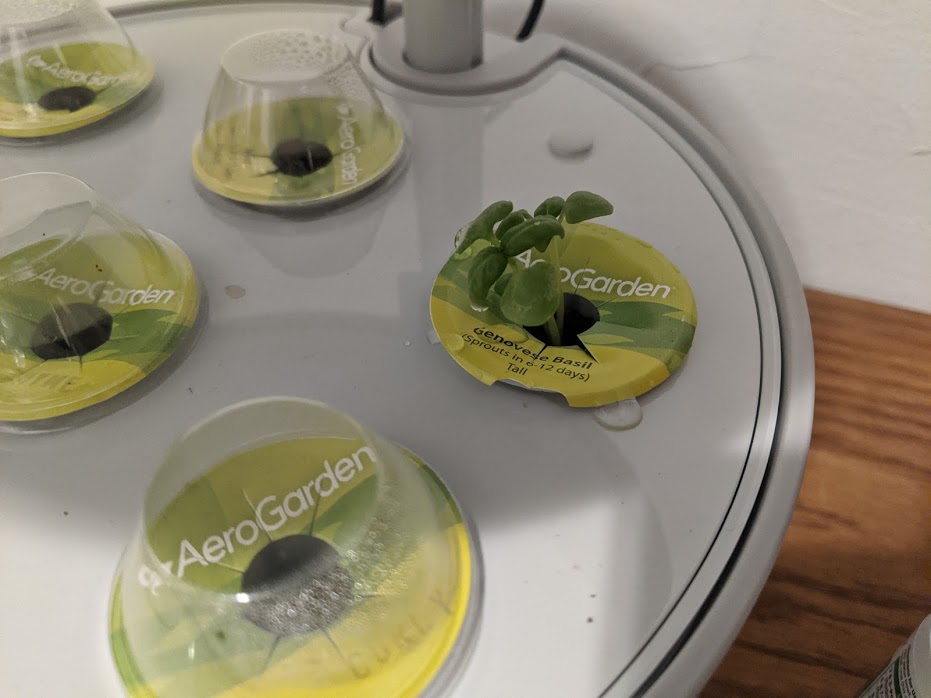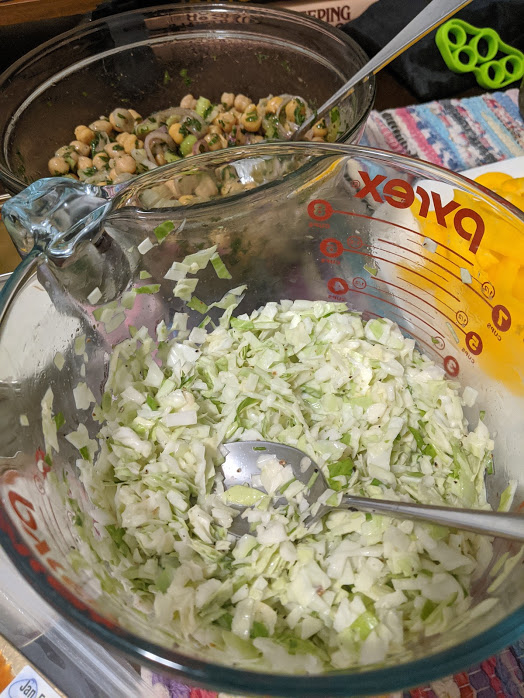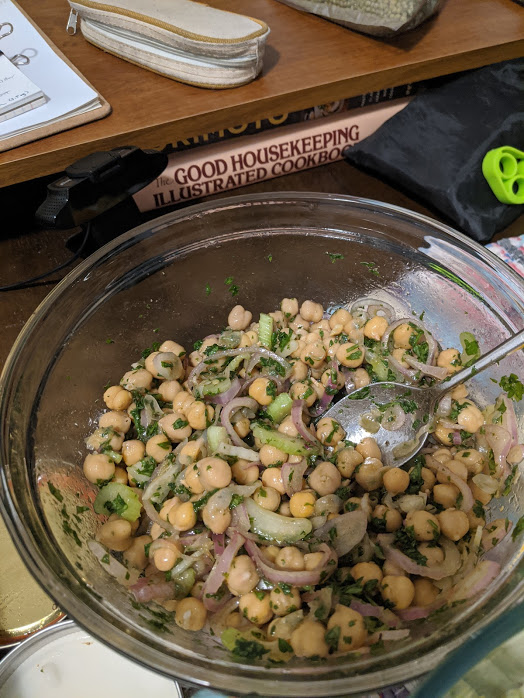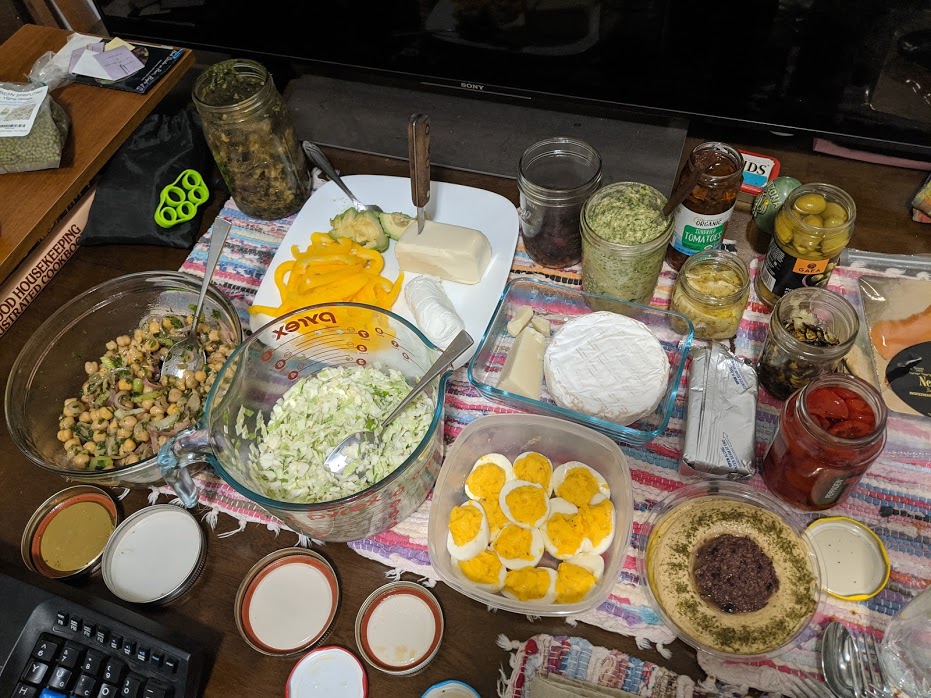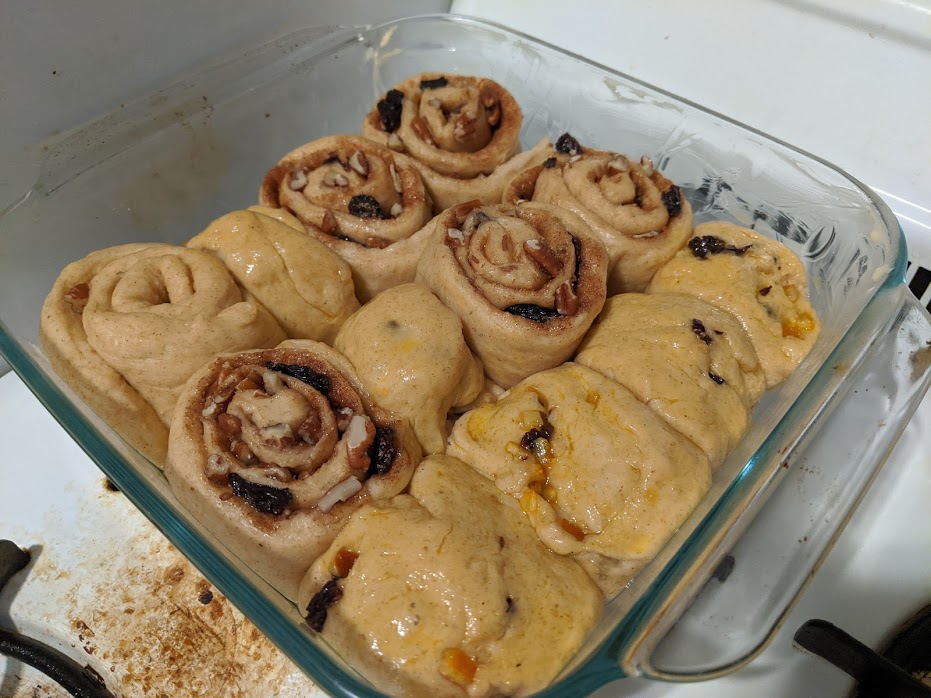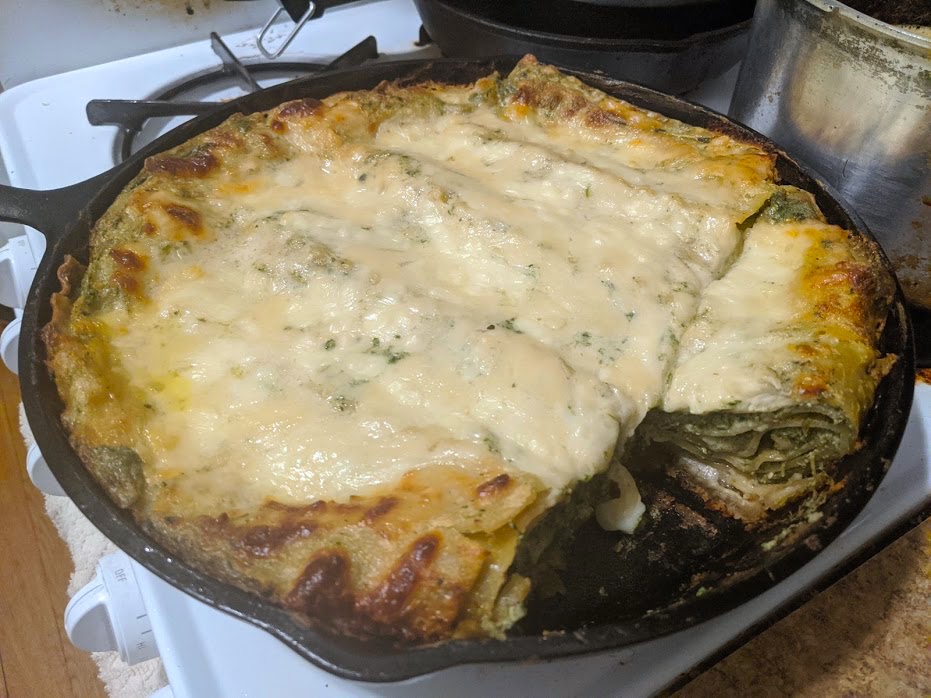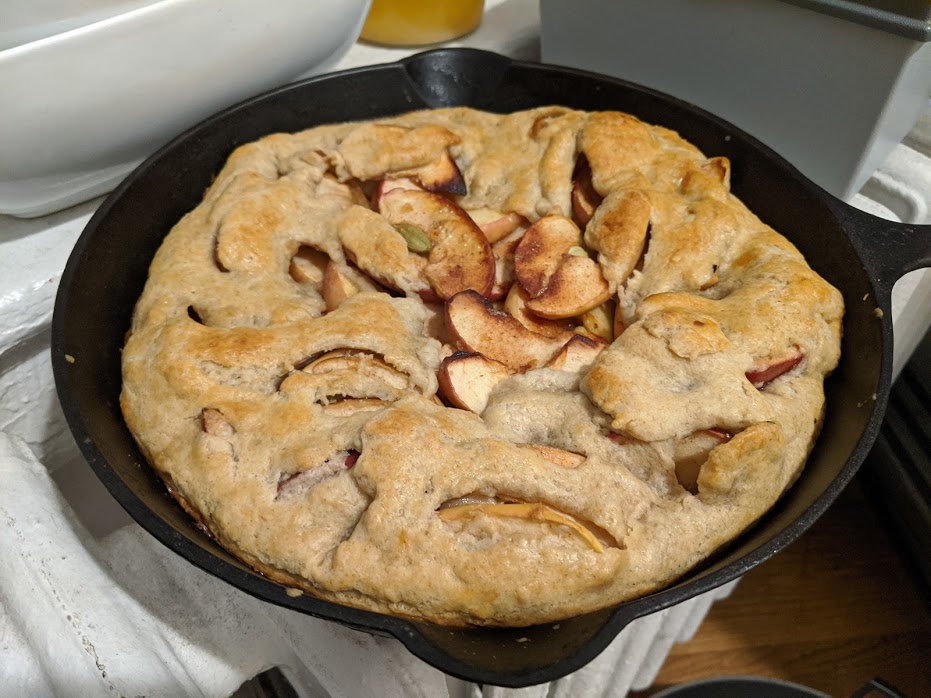J and I saw several arepa stands at a street fair. They didn’t look amazingly high quality (at least one stand was just heating up pre-packaged arepas), so J took it as inspiration to make our own!
Arepas are Venezuelan and Colombian, mostly. We made the simplest variety, which is a cornmeal pancake cut in half and stuffed with mild cheese. The cornmeal has to be either pre-cooked (masarepa; the traditional way) or nixtamalized (masa harina; will be slightly less fluffy) to form a dough properly. You can’t just use regular old cornmeal, but instant polenta might work.
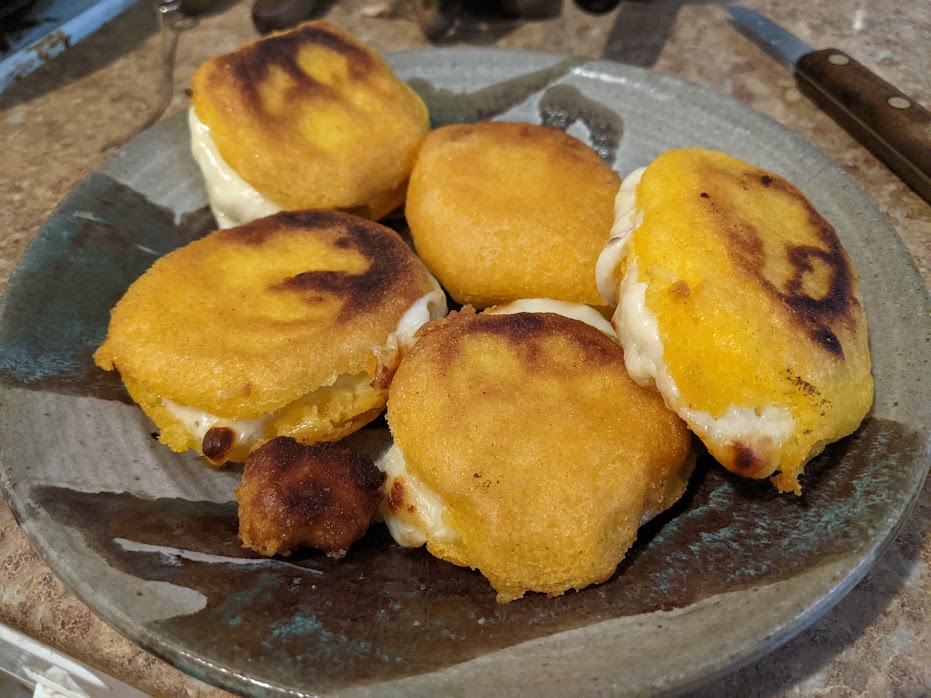
Recipe
- 2 cups warm water
- 2 cups masarepa or masa harina
- If using masa harina, some baking powder to add fluffiness
- Mix everything together. Let rest for 10 min. Dough should be moist and able to form balls without cracking, but not stick to your hands too much.
- Form into patties (standard thickness is 1/2 in). Deep fry, OR pan fry ~3 min on each side and then bake for 15 min.
